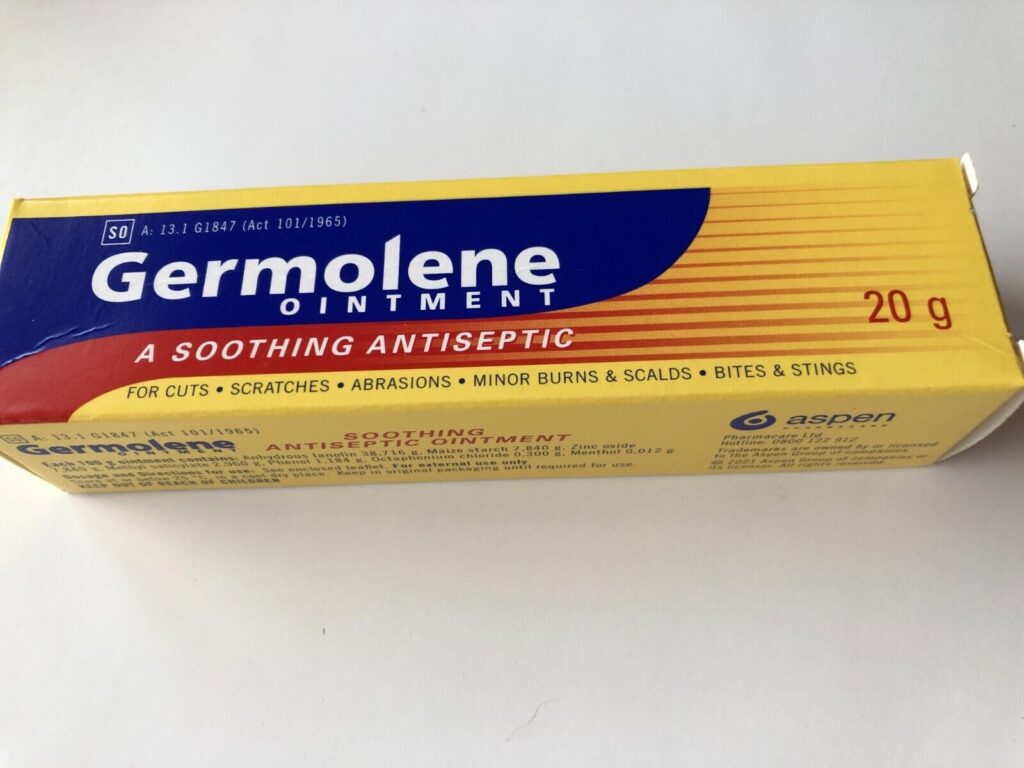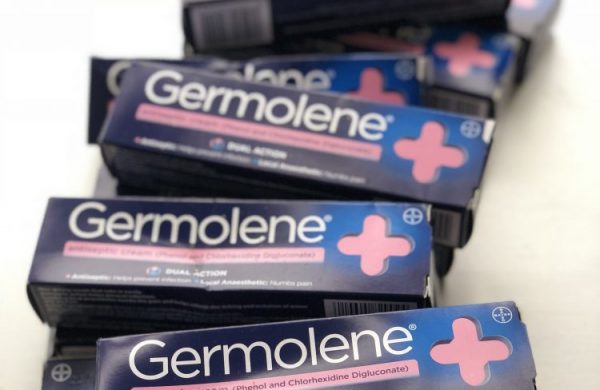Germolene ointment was stopped because a key ingredient became hard to get. When the ointment was put in tins made of mild steel, it reacted with moisture, making the ointment turn pink over time. Even though the color change didn’t affect how well it worked, people weren’t happy about it.
To fix this, they added a color to the ointment to cover up the color change. There were also safety worries about one of the ingredients, phenol, so that might have been another reason for stopping it. The government advises against using phenol in skin products because it could be harmful in high amounts.
Even though Strepsils, the company behind Germolene, didn’t officially say why they stopped it, it seems like the challenges with the key ingredient and worries about how it reacted with the packaging led to the decision to discontinue Germolene ointment.
What is Germolene?

Germolene is a brand of antiseptic products that are used for first aid purposes. Originally, it was a thick pink ointment with a distinctive smell, and later, it was also produced in a white cream form.
Furthermore, the product contains antiseptic properties, making it useful for treating minor cuts, wounds, and skin infections. It was invented by Sir William Henry Veno in 1925. Over the years, the product has evolved, and while the thick pink ointment is no longer available to the public without a prescription, Germolene cream can still be found in most chemists and supermarkets. The brand is currently owned by Bayer, who acquired it from SmithKline Beecham in 1999.
What’s Inside Germolene: Ingredients for First Aid and Comfort
Germolene contains active ingredients that help with different effects. It has phenol at 1.2%, which works as an antiseptic provides local pain relief, also reduces itching.
Additionally, it contains chlorhexidine digluconate at 0.25%. Germolene products designed for treating haemorrhoids (Germoloids), also include zinc oxide and an analgesic called lidocaine hydrochloride. These ingredients are chosen to address specific needs, like reducing pain and discomfort associated with haemorrhoids.
Possible Reactions to Germolene Cream and Safety Notes
Germolene cream has chlorhexidine as its active ingredient, and although rare, it can sometimes cause allergic reactions. Minor allergic responses may include itching, redness, dermatitis, eczema, rash, hives, skin irritation, and blisters.
In more serious cases, there could be symptoms of anaphylaxis, such as shortness of breath, swelling of the face, severe rash, hives, and shock. It’s important to note that Germolene cream should not be used by individuals who are known to be hypersensitive to chlorhexidine or any other components in the cream.
For small animals like dogs, cats, rabbits, and mice, the active ingredient phenol in Germolene can be highly toxic if swallowed or applied to their skin. Cats, in particular, are more vulnerable to phenol. However, for humans, phenol is only hazardous if ingested in very large quantities.
FAQ’s
Why can’t I get Germolene ointment?
The thick pink Germolene ointment was confirmed by Bayer as no longer being available to the UK public since July 2014.
What is Germolene called now?
Bepantiseptic is a first aid cream that soothes and prevents infection, formerly known as Germolene first aid cream.
Is Germolene safe to use?
Yes, Like all medicines, Germolene Antiseptic Cream can cause side effects, but these are rare. Local irritation, rash, or other skin reactions at the application site may occur.
Can I still buy Germolene?
Yes, you can buy Germolene antiseptic cream at various pharmacies and online retailers.
What is the warning for Germolene?
Germolene Antiseptic Cream is for external use only. Avoid contact with eyes and mouth. If accidentally swallowed, seek medical attention. Side effects are rare but can occur.
Why is Germolene so good?
Germolene Antiseptic Cream combines Phenol and Chlorhexidine Digluconate for antiseptic action, preventing infections, and a local anaesthetic effect to numb pain.
Is Germolene poisonous?
No, Germolene is generally not poisonous. Extensive exposure is unlikely through topical use. Harm is expected only if ingested in very large quantities.
Is Germolene good for the skin?
Yes, Germolene Wound Care Cream is effective for skin treatment, preventing infection, reducing swelling, and aiding healing in minor skin injuries.
Is Germolene good for open wounds?
Yes, Germolene Wound Care Cream is a gentle treatment for minor abrasions, cuts, scratches, burns, bites, and stings. It contains a gentle antiseptic to help prevent further infection.
What is Germolene antiseptic cream used for?
Germolene Antiseptic Cream is used to ease pain and help prevent infections of minor cuts and grazes, minor burns, scalds, blisters, stings and insect bites, spots, and chapped or rough skin.
Is Germolene ointment available on prescription?
Yes, the thick pink Germolene ointment is only available with a doctor’s prescription since July 2014.
Does Germolene draw out infection?
Yes, Germolene is recommended as an antiseptic to help prevent secondary infection and as a local anaesthetic and emollient for minor cuts and grazes, burns, blisters, stings, insect bites, spots, and other minor skin conditions.
Can you use Germolene on intimate areas?
No, it is advised to avoid using antiseptic creams such as Savlon or Germolene on genital skin as they may be too harsh and delay healing.
Can you buy Germolene in Canada?
Yes, Germolene is available for purchase in Canada.
Can Germolene be used on vaginas?
No, it is not recommended to use Germolene or similar antiseptic creams on genital areas.
What are the uses of Germolene antiseptic cream?
Germolene Antiseptic Cream’s dual action is effective for minor cuts, grazes, burns, scalds, blisters, stings, insect bites, spots, and chapped or rough skin. Phenol and Chlorhexidine have antiseptic properties for disinfection, and Phenol also acts as a local anaesthetic.
Is antiseptic cream the same as chlorhexidine?
Yes, Germolene Antiseptic Cream contains both Phenol and Chlorhexidine Digluconate, offering dual antiseptic action for treating minor skin issues.
Final Words
Germolene ointment was stopped because it was getting hard to find a main ingredient. When the ointment was put in certain tins, it reacted with moisture and changed color over time, which people didn’t like. They added a color to cover it up, but there were also worries about one of the ingredients, phenol. The government says phenol can be risky in high amounts.
Even though the company didn’t officially say why they stopped it, it seems like problems with the main ingredient and concerns about how it reacted with the packaging led to the decision to discontinue Germolene ointment.

